Imaging features of retroperitoneal extra-adrenal paragangliomas in 10 dogs
- PMID: 35050528
- PMCID: PMC9546460
- DOI: 10.1111/vru.13063
Imaging features of retroperitoneal extra-adrenal paragangliomas in 10 dogs
Abstract
Retroperitoneal paragangliomas are rare tumors of the neuroendocrine system. Only a few canine case reports are available with rare descriptions of their imaging features. The objectives of this multi-center, retrospective case series study were to describe the diagnostic imaging features of confirmed retroperitoneal paragangliomas and specify their location. Medical records and imaging studies of 10 affected dogs with cytological or histopathologic results concordant with retroperitoneal paragangliomas were evaluated. Dogs had a median age of 9 years. Four of them had clinical signs and laboratory reports compatible with excessive production of catecholamines. Six ultrasound, four CT, four radiographic, and one MRI studies were included. The paragangliomas did not have a specific location along the aorta. They were of various sizes (median 33 mm, range: 9-85 mm of length). Masses had heterogeneous parenchyma in six of 10 dogs, regardless of the imaging modality. Strong contrast enhancement was found in all CT studies. Encircling of at least one vessel was detected in six of 10 masses, clear invasion of a vessel was identified in one of 10 masses. In five of 10 cases, the masses were initially misconstrued as lymph nodes by the on-site radiologist. Retroperitoneal paragangliomas appear along the abdominal aorta, often presenting heterogeneous parenchyma, possibly affecting the local vasculature, and displaying strong contrast enhancement on CT. Clinical signs can be secondary to mass effects or excessive catecholamine production. Underdiagnosis and misdiagnosis of this tumor are suspected as they can be silent, of small size, or confused with other structures.
Keywords: MRI; canine; computed tomography; neuroendocrine; ultrasound.
© 2022 The Authors. Veterinary Radiology & Ultrasound published by Wiley Periodicals LLC on behalf of American College of Veterinary Radiology.
Conflict of interest statement
The authors have declared no conflict of interest.
Figures
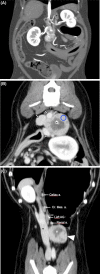
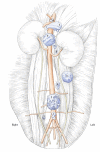
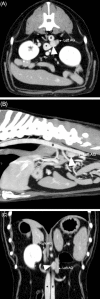
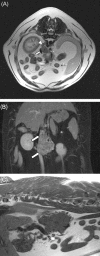
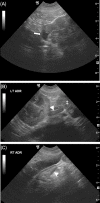
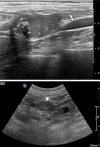
References
-
- Moonim MT. Tumours of chromaffin cell origin: phaeochromocytoma and paraganglioma. Diagn Histopathol. 2012; 18:234‐244.
-
- Lam AK. Update on adrenal tumours in 2017 World Health Organization (WHO) of endocrine tumours. Endocr Pathol. 2017; 28:213‐227. - PubMed
-
- Galac S, Korpershoek E. Pheochromocytomas and paragangliomas in humans and dogs. Vet Comp Oncol. 2017; 15:1158‐1170. - PubMed
-
- Robat C, Houseright R, Murphey J, et al. Paraganglioma, pituitary adenoma, and osteosarcoma in a dog. Vet Clin Pathol. 2016; 45:484‐489. - PubMed
Publication types
MeSH terms
LinkOut - more resources
Full Text Sources

